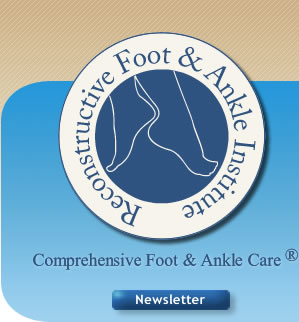Shockwave Therapy for Heel Pain
What is ESWT?
ESWT is a new procedure used to treat chronic heel pain (plantar fasciitis or heel spur syndrome). “Extracorporeal” means “outside the body”, and refers to this non-invasive surgical procedure in which strong sound waves are directed at the area of pain. The device used is similar to devices used in non-surgical treatment of kidney stones.
What is Plantar Fasciitis?
This painful condition results from inflammation of the connective tissue that stretches from the base of the toes, across the arch of the foot, to the point at which it inserts into the heel bone (calcaneus). It is sometimes associated with a heel spur (bony or calcified deposit), in which case it is called “heel spur syndrome.” The condition can usually be successfully treated with conservative therapies such as the use of anti-inflammatory medications and ice packs, stretching exercises, orthotic devices, and physical therapy. If the condition does not clear up after several months of treatments, ESWT may be considered.
What happens during ESWT?
Your doctor will ask you to quit taking anti-inflammatory medication approximately three days prior the procedure. The treatment takes approximately 30 minutes and is performed with minimal anesthesia. Sound waves penetrate the heel area and stimulate a healing response by the body. It is an outpatient procedure and does not require an overnight stay in the hospital.
Who should not be treated with ESWT?
ESWT is not appropriate for patients who have a bleeding disorder or who are taking medications that may prolong bleeding or interfere with blood clotting. It should not be used during pregnancy. In addition, its safety and effectiveness have not been established for those with nerve damage, severe peripheral vascular disease, metabolic disorders, and infections.
What happens after treatment?
There may be some mild pain or numbness and tingling after the treatment. Patients should be able to return to normal daily activities the following day with modified or light duties (no heavy exercise). Activities to avoid for the 4 to 6 weeks after the procedure include taking anti-inflammatory medications, heavy lifting of objects, running, aerobic classes, sporting activities.
As with any procedure, complications may arise. Complications were reported in less than 1% of the cases during the FDA clinical trails of ESWT. The most common reported complications were bruising of the skin, swelling, pain, and/or numbness or tingling. These conditions usually resolve on their own within a few days following the procedure.
Talk with your physician.
ESWT is a new treatment modality. Your physician can advise whether you may be a candidate for ESWT and where the therapy may be obtained.
